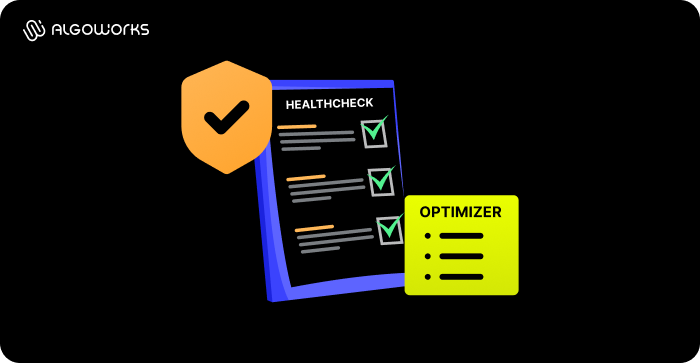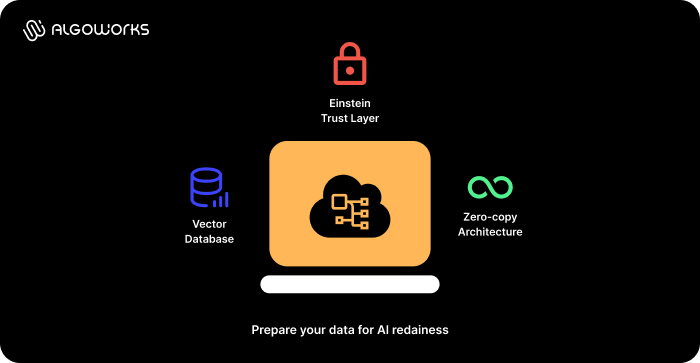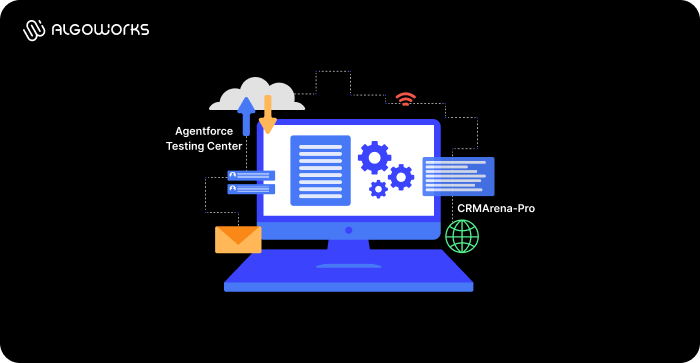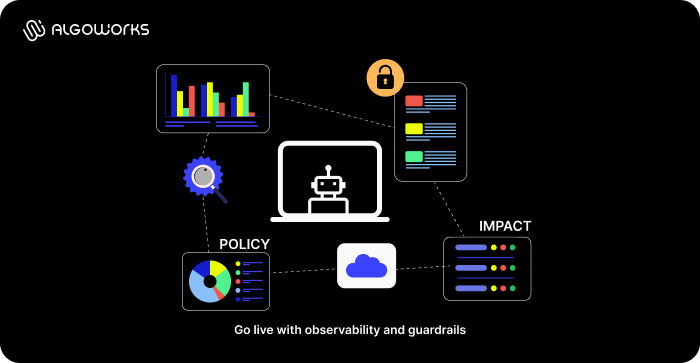From health check to AI agent: What’s new in Salesforce optimization
For years, Salesforce optimization meant running a health check, fixing red flags, cleaning up unused objects and keeping the organization secure. While these steps still matter, today organizations are looking at how to optimize Salesforce AI to scale securely and efficiently.
Let’s take a look at how the journey flows from traditional health checks to an AI-powered Salesforce that is secure, efficient and future-ready.

Step one: Get the basics right with health checks and optimizer
To begin with, Salesforce Health Check scores your organization against security best practices. It highlights password policies, session settings and compliance risks. Think of it as your routine medical exam—if you skip it, everything else you build rests on shaky ground.
What does a Salesforce Optimizer add to this?
Salesforce Optimizer goes deeper, uncovering unused fields, redundant flows or aging code that slows things down. By clearing up this clutter, you free up resources and improve system performance.
Always remember that AI agents thrive only in a healthy environment. Without this foundation, agents won’t improve efficiency and could magnify existing issues. A clean organization is the foundation, but even a healthy system can fail if the data feeding your agents is scattered or untrusted. That’s why the next step is preparing your data.

Step two: Prepare your data for AI readiness
Without unified, trusted data, you can’t truly optimize Salesforce AI performance. Salesforce Data Cloud performs this well by bringing customer data together into proper profiles. Moreover, with zero-copy architecture, you can connect data without replicating it, keeping latency and cost under control.
New capabilities like the vector database let Salesforce store and retrieve unstructured content, including PDFs, transcripts, emails, etc. This way, the agents can ground their responses in real business knowledge. Of course, data without trust is risky. Therefore, the Salesforce Einstein Trust Layer adds guardrails by masking sensitive data, grounding responses in Salesforce records and running toxicity checks.
Before you hand data to agents, this step makes sure that it stays secure and compliant. With unified, trusted data in place, you’re ready to build your first agents. But just like any new team member, they need to be trained and tested before they face customers.

Step three: Build and test your AI agents
The next step is to define the distribution of tasks for the agents. It is important not to overload them with every task at once; start small, with a service triage agent or a lead recycling agent. Next, you must test everything before going live. The Salesforce Agentforce Testing Center lets you create realistic scenarios and evaluate whether your agents handle them correctly.
For more advanced needs, CRMArena-Pro provides a “digital twin” of your business, letting you see how agents behave in complex, real-world environments without risking your production org. Testing is now the new health check if you want to optimize Salesforce AI strategy successfully.
Once testing proves your agents are ready, the focus shifts to going live responsibly, with observability and guardrails that keep things safe.

Step four: Go live with observability and guardrails
Finally, when the agents are live, Command Center and Optimization are key tools when you optimize Salesforce AI in production. The Salesforce Command Center gives you real-time visibility. You can see what the agent is doing, what tools it’s calling, where it is failing and how customers are interacting with it.
Agentforce Optimization closes the loop. It spots configuration gaps, performance drifts and areas where agents need turning. This means optimization isn’t a one-time job—it’s ongoing.
Policies like Transaction Security prevent risky actions (think bulk data exports or unauthorized price changes). Human-in-the-loop approvals can also stop agents from pushing through irreversible steps.
But even the best guardrails mean little if you don’t measure the impact. That’s why optimization today is defined not only by security but also by clear business outcomes.
Step five: Measure what “optimized” really means
In 2025, an optimized Salesforce development company isn’t judged just by compliance or performance. It’s also about proving business value through:
- Resolution time for customer cases
- Deflection rates from human reps to agents
- Accuracy and grounding rates for responses
- Time saved for sales and service teams
- ROI per outcome, not just per license
These metrics show whether your AI agents are truly delivering impact.
Practical rollout plan
Think of the journey as a staged rollout rather than a big-bang launch. Each phase builds trust and reduces risk:
- First and second week: Run Health Check and Optimizer and switch on event monitoring to make sure the basics are solid.
- Third and fourth week: Build your first agent, set up test cases and run simulations in CRMArena-Pro to see how it behaves in a safe environment.
- Fifth and sixth week: Move into a limited production launch with real-time monitoring in Command Center and feed insights back into Optimization for continuous improvement.
This phased approach makes sure you are not just launching agents; you are steadily building confidence in them.
Common challenges to avoid
Even with a clear plan, there are pitfalls that can derail the journey. Stay alert to these:
- Skipping org hygiene: Dirty data or misconfigured settings will lead to bad outcomes once agents go live.
- Rushing without testing: Deploying agents straight into production almost guarantees unexpected failures.
- Neglecting observability: Without monitoring, you will have no idea why or where an agent went wrong.
- Blind trust in data pipelines: If compliance gaps aren’t addressed early, they will surface later—often when it is too late.
Conclusion
Optimization isn’t just about green scores on a dashboard anymore. It’s about combining the old basics, Health Checks and Optimizer, with the new cycle of testing, monitoring and AI governance.
A truly optimized Salesforce org is one that’s clean, intelligent and trustworthy, and key to success today, ready to support AI agents that scale safely and deliver measurable business value.
If you’re ready to optimize Salesforce AI for your business, connect with Algoworks at Dreamforce and take the next step toward an optimized, AI-powered Salesforce.
People also ask
What are the capabilities of AI agents in Salesforce?
Salesforce AI agents can automate tasks like service triage and lead recycling, respond using grounded business data (from sources like PDFs, emails, and transcripts) and integrate into workflows to improve efficiency without requiring system overhauls.
How to optimize AI agents in Salesforce?
Key methods include:
- Health Checks and Optimizer for org hygiene
- Using Salesforce Data Cloud for zero-copy data integration
- Employing the Einstein Trust Layer for security
- Testing via CRMArena-Pro and Agentforce Testing Center
- Real-time observability with Command Center
- Continuous tuning with Agentforce Optimization
What are the latest advancements in Salesforce?
Recent innovations include:
- Vector database for handling unstructured content (like PDFs and emails)
- Einstein Trust Layer for secure, compliant AI interactions
- CRMArena-Pro, a digital twin for safe agent testing
- Agentforce Optimization and Command Center for real-time monitoring and feedback
How do I train and test AI agents in Salesforce?
Use the Agentforce Testing Center to simulate real-world scenarios and evaluate agent behavior. For complex testing, CRMArena-Pro lets you run agents in a “digital twin” of your business environment without affecting your live org.
